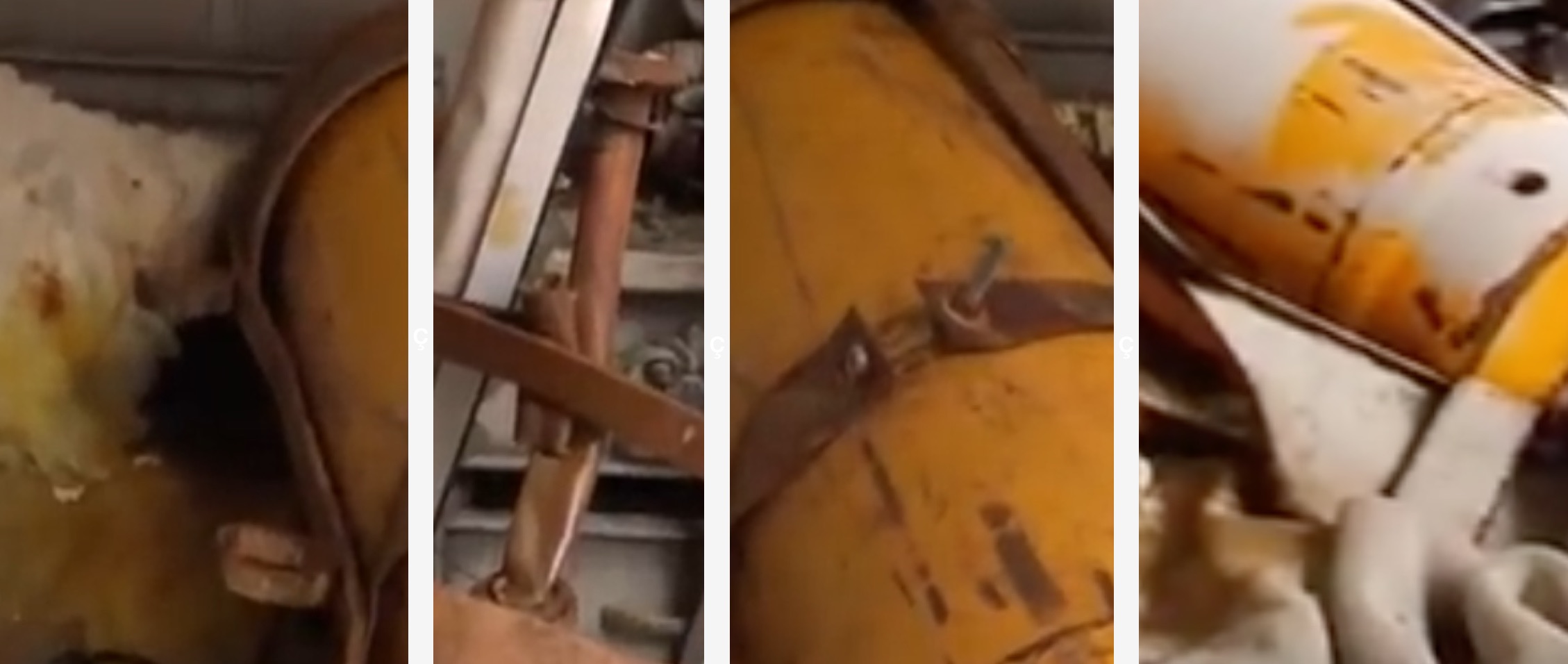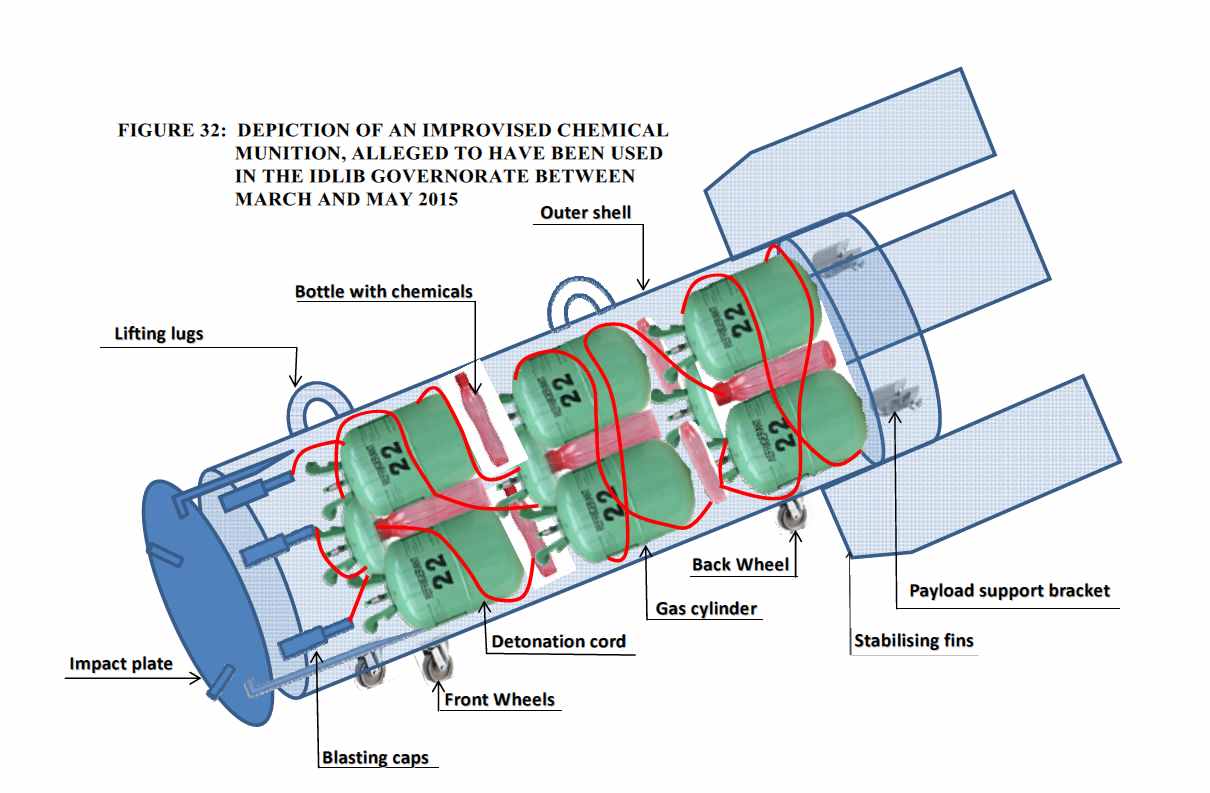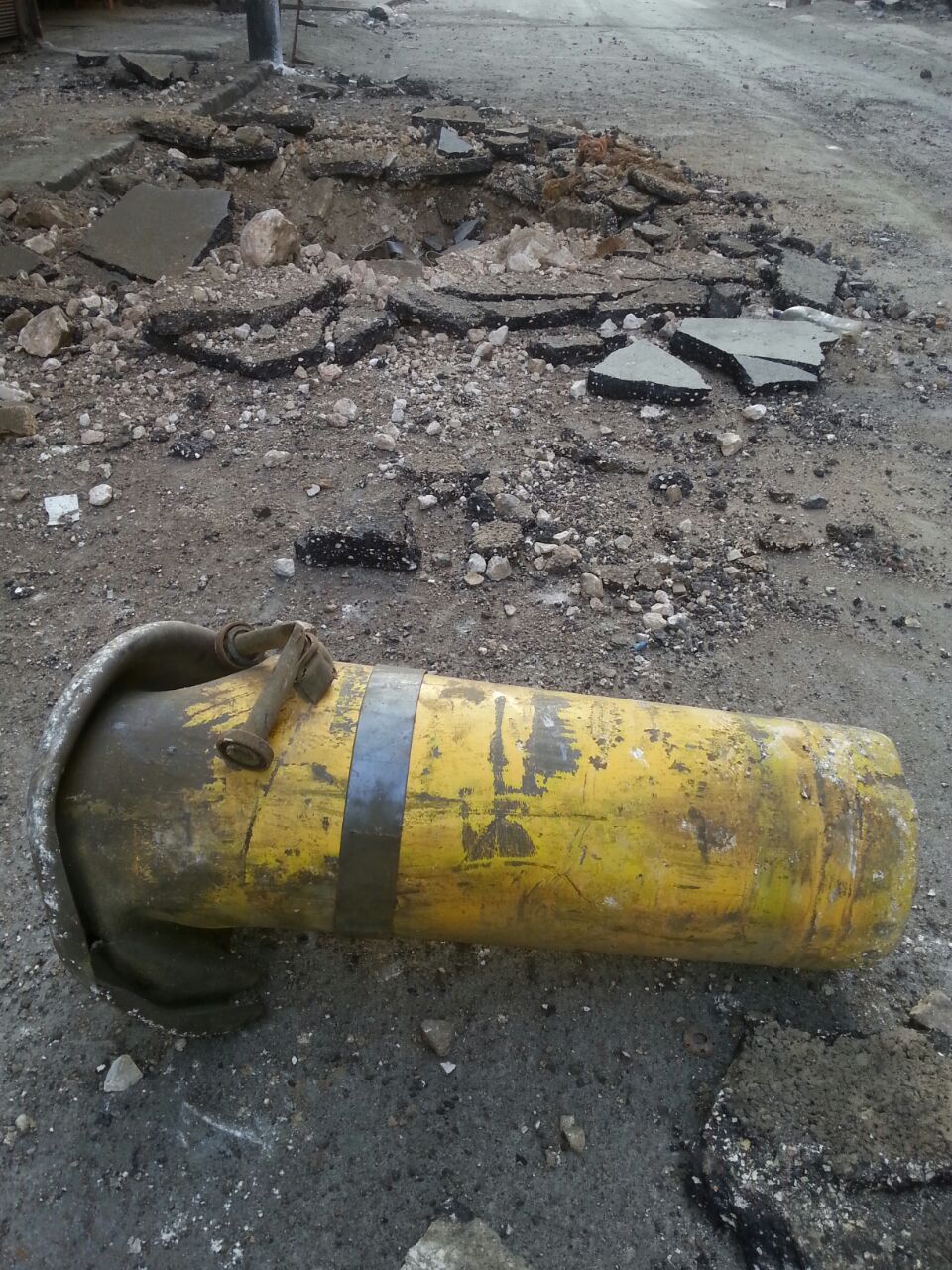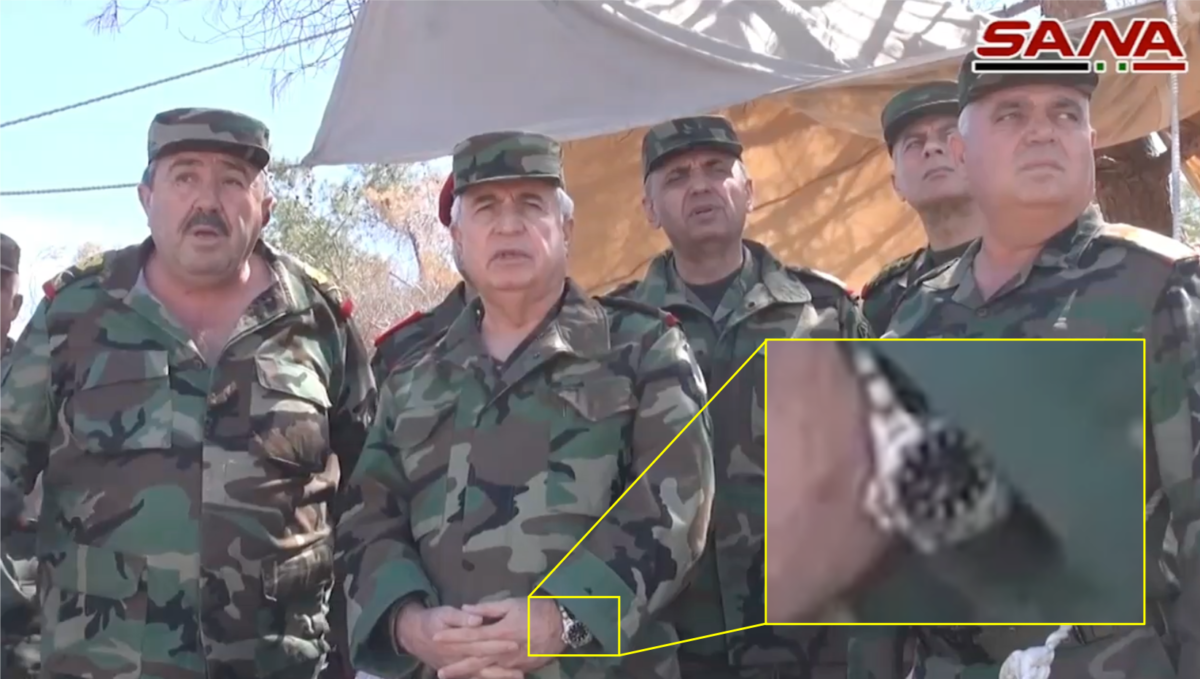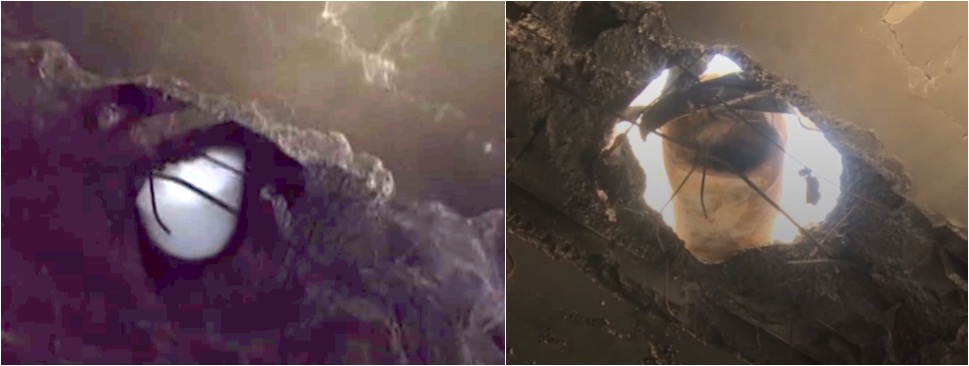All the Pieces Matter - Syria's Chlorine Bombs and the Douma Chemical Attack
Following the Douma chemical attack on April 7th 2018, much attention has been paid to two impact sites where the remains of yellow gas cylinders were discovered. While much has been made of the position of these gas cylinders, less attention has been paid to the historical use of chlorine as a chemical weapon in the Syrian conflict, and what it tells us about the chlorine cylinders filmed in the aftermath of the Douma attack.
For the purposes of this article, the cylinders will be described as the “bedroom cylinder” and “balcony cylinder”, reflecting where the cylinders were found. The balcony cylinder has been previously geolocated by Bellingcat, in a building where at least 34 dead were filmed following the attack. It should be noted various sources have reported the number of fatalities as being between 43 to 85+, and while there were 34 dead counted in footage from the balcony cylinder building there does not appear to be footage of the dead reportedly found in the basement of the building, which could increase the number of dead in that building significantly, and may account for the majority, if not all, of the deaths from the Douma chemical attack.
The bedroom cylinder has not been independently geolocated, but is believed to be in another building close to the balcony cylinder. It is notable that there appears to have been no fatalities filmed in the same building as the bedroom cylinder.
A number of claims have been made as to how the cylinders found their way into these buildings. In a recent report by “Vesti”, a national news program produced by the state-owned VGTRK media consortium, claims were made that the cylinders were planted in the buildings, and the damage to the buildings were faked to make it appear as if the cylinders had been dropped on the building.
However, several hours after the attack, at 2:46am local time, a graphic video was uploaded showing the interior of the balcony cylinder building, showing multiple corpses, seen in earlier videos of the same location, and at 1:35 in the video a group of men enter a room, and rapidly exit, with the end of the gas cylinder being briefly seen. A comparison of that footage and footage from CBS News, who visited the balcony cylinder site, confirms the end of the gas cylinder is visible:
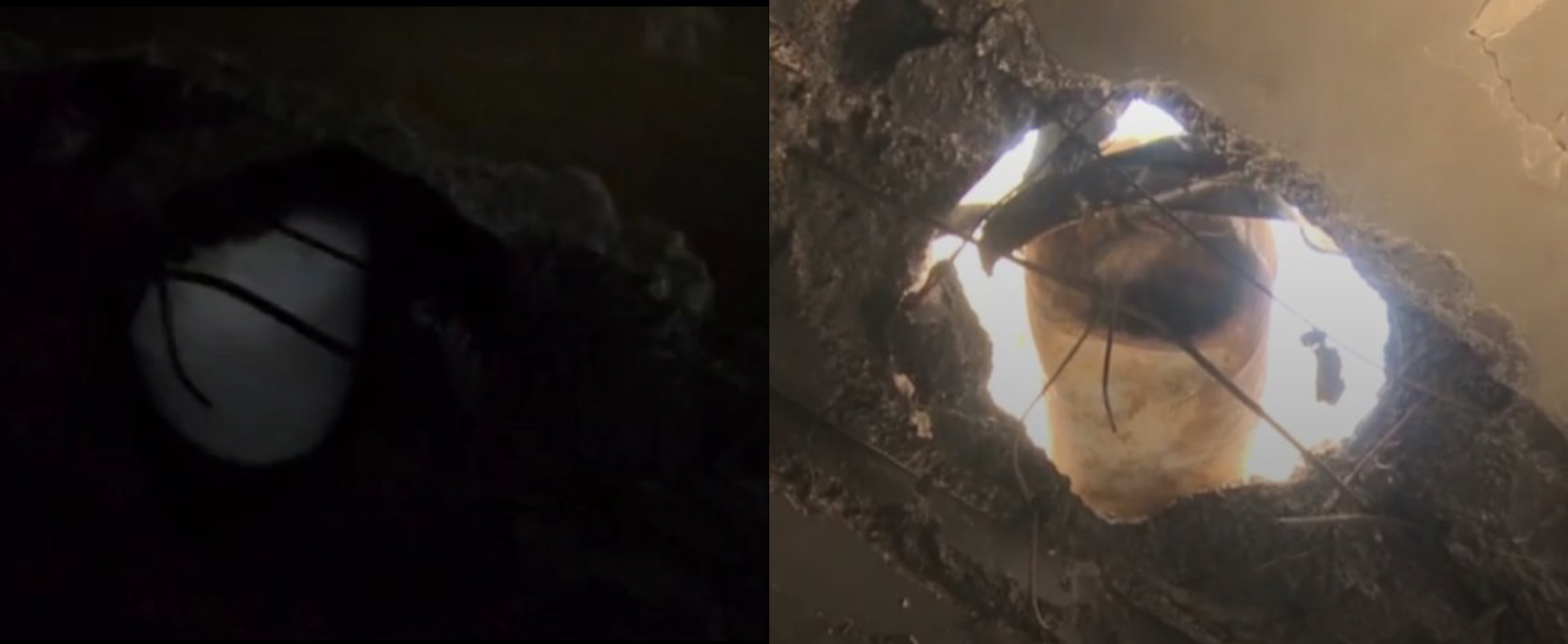
Left, footage from the night of the attack (source), Right, CBS News footage of the underside of the balcony impact site (source)
What is significant about the footage from the night of the attack is it shows the gas cylinder is white, which is almost certainly due to frost forming after the rapid release of pressurised gas. This phenomenon has been documented in previous chlorine attacks, for example on surface to surface chlorine filled rockets used in a January 22nd 2018 chlorine attack in Douma:
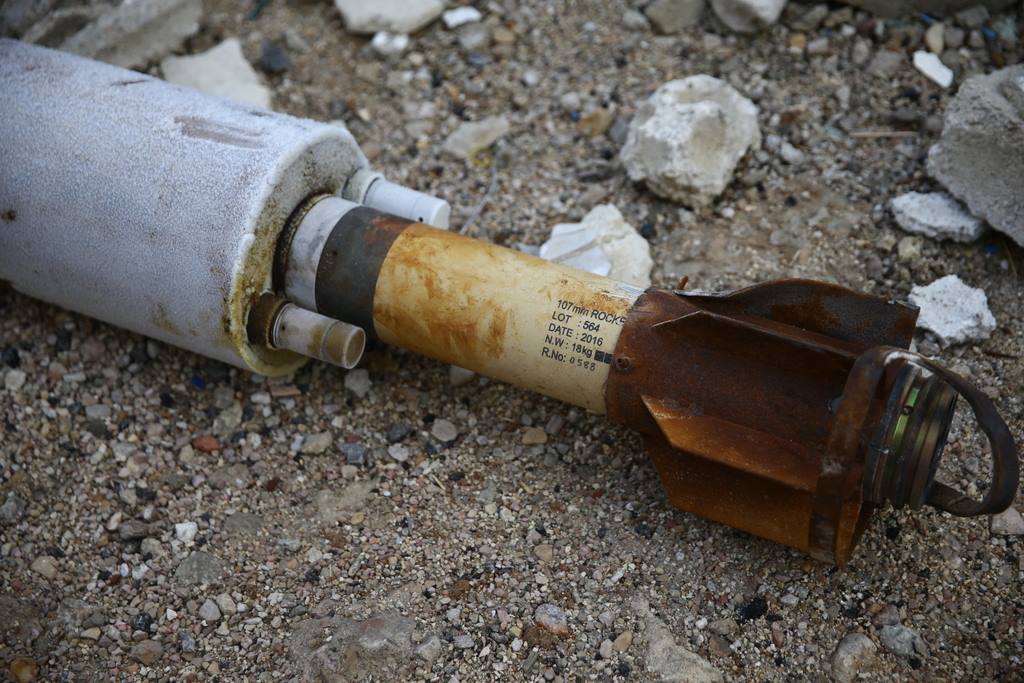
A photograph published by Bassam Khabieh on Facebook on January 22nd showing the munition used with frost on the warhead (Photo credit: Bassam Khabieh)
Footage published by Al Jazeera Arabic of an earlier chlorine attack clearly shows yellow-green gas escaping from a yellow gas cylinder partly covered in frost, again confirming this phenomenon:
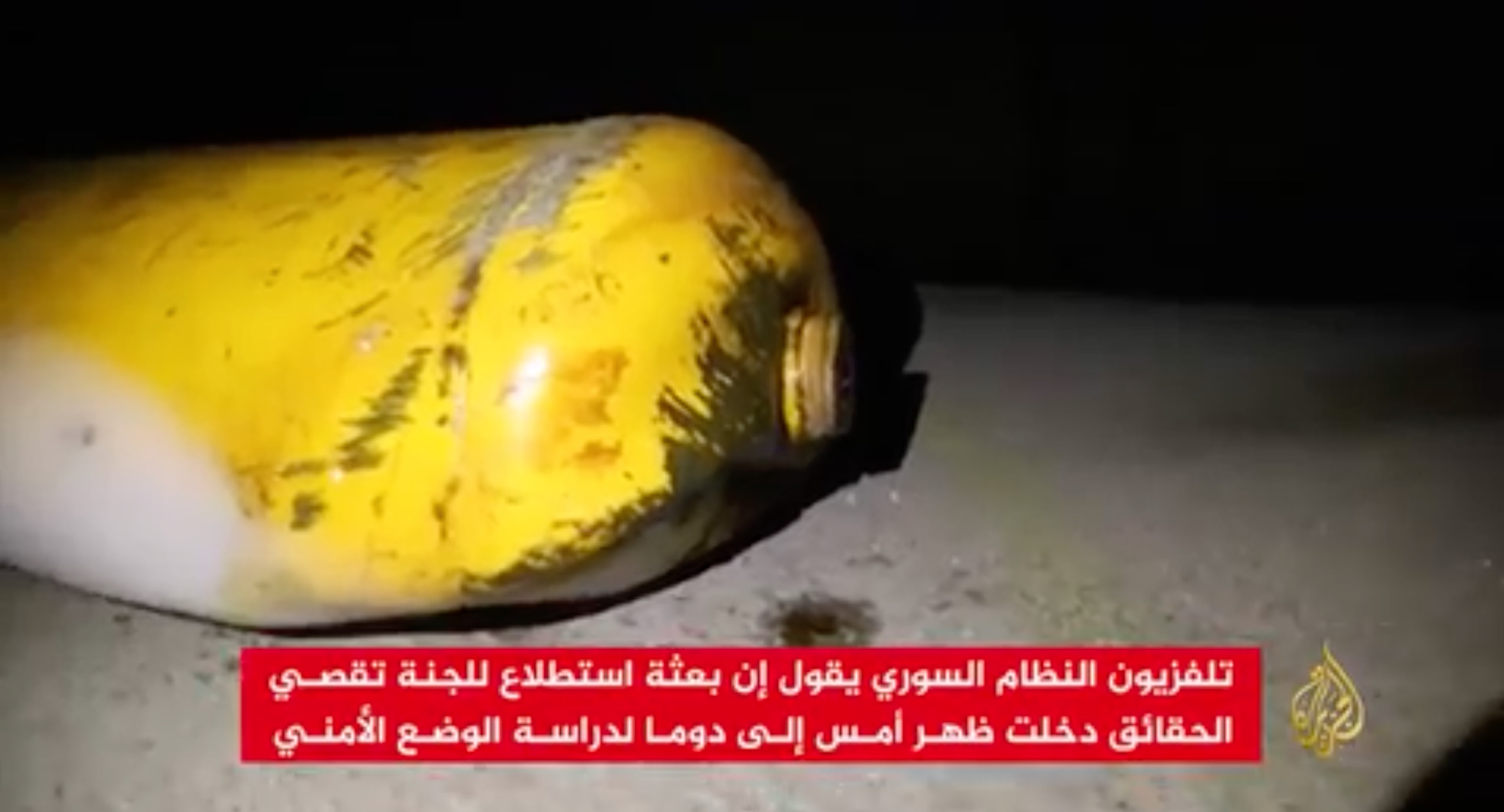
Footage published by Al Jazeera Arabic showing a partly frost covered gas cylinder as it discharges gas (source)
This clearly shows that the gas cylinder would have been expelling gas into the building, and that it wasn’t simply placed in a hole in the building. Also notable is the front end of the gas cylinders at the bedroom and balcony sites. At the bedroom site the front end of the cylinder has minimal damage, and the pressure valve used to fill the cylinder is still in place:
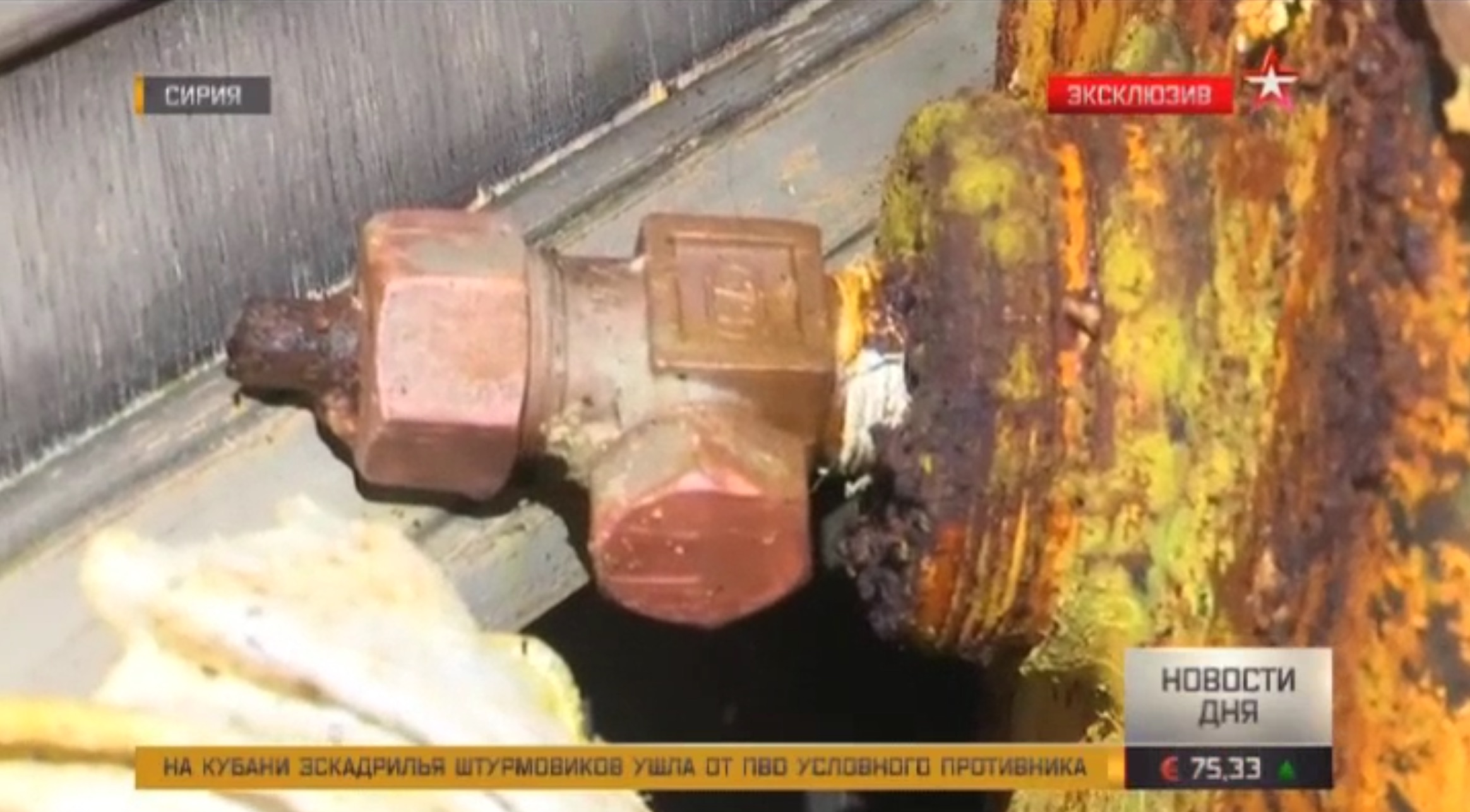
The front end of the bedroom cylinder, showing the valve in place. (source)
At the balcony cylinder site, the front of the cylinder is dented, with the valve clearly absent:
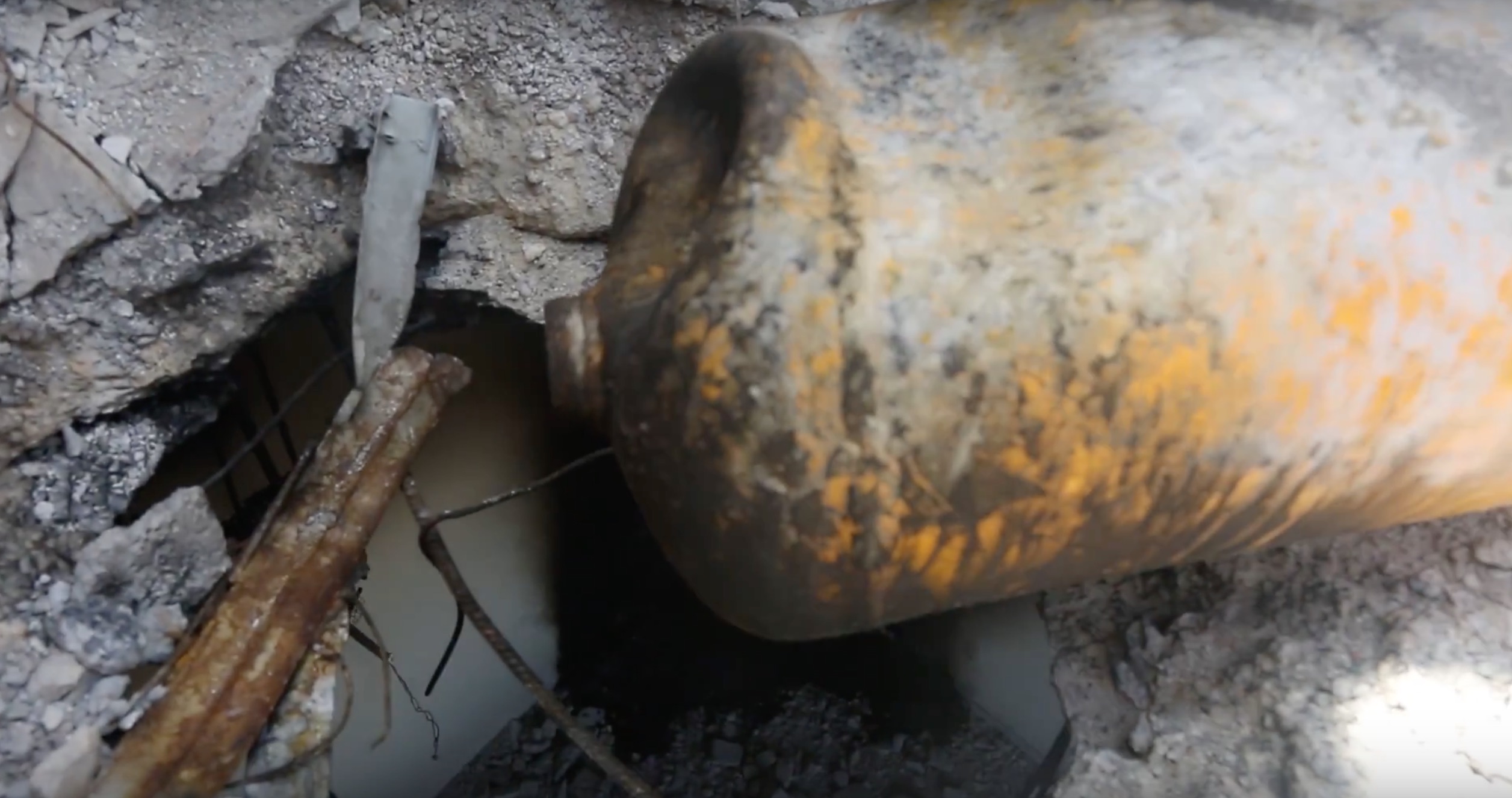
The front end of the balcony cylinder, filmed April 8th 2018 (source)
In the Vesti report from the bedroom cylinder site it is claimed the valve is partly opened to slowly release the gas from the cylinder, so if these cylinders were both placed intentionally in an attempt to fake the attacks the question is why at one site the valve removed and at the other site it was opened slightly? Why do witnesses not describe the hours of noise that would have been generated from the holes being smashed through the concrete roofs?
If, as seems the most likely scenario, the cylinders were dropped from the air, the presence of the valve on the bedroom cylinder would suggest the improvised munition did not function as intended, leaving the valve in place, and limiting the release of gas, hence the lack of casualties reported from the bedroom cylinder site. At the balcony cylinder site, the removal of the valve and its position inside the building, would have resulted in the cylinder discharging into the apartment building, rapidly flooding it with chlorine gas.
This is not the only difference between the two cylinders. The bedroom cylinder has a metal structure surrounding it, while this structure is absent from the balcony cylinder. This structure includes the following key features:
Much of the balcony cylinder footage focuses on the cylinder itself, ignoring debris surrounding the cylinder, but this debris provides crucial clues linking the two cylinders together. In the April 8th footage of the balcony cylinder the same style of axle and wheels can be seen close to the cylinder. The metal axle is connected to another shorter metal tube, the same configuration as visible welded to the metal frame on the bedroom cylinder:
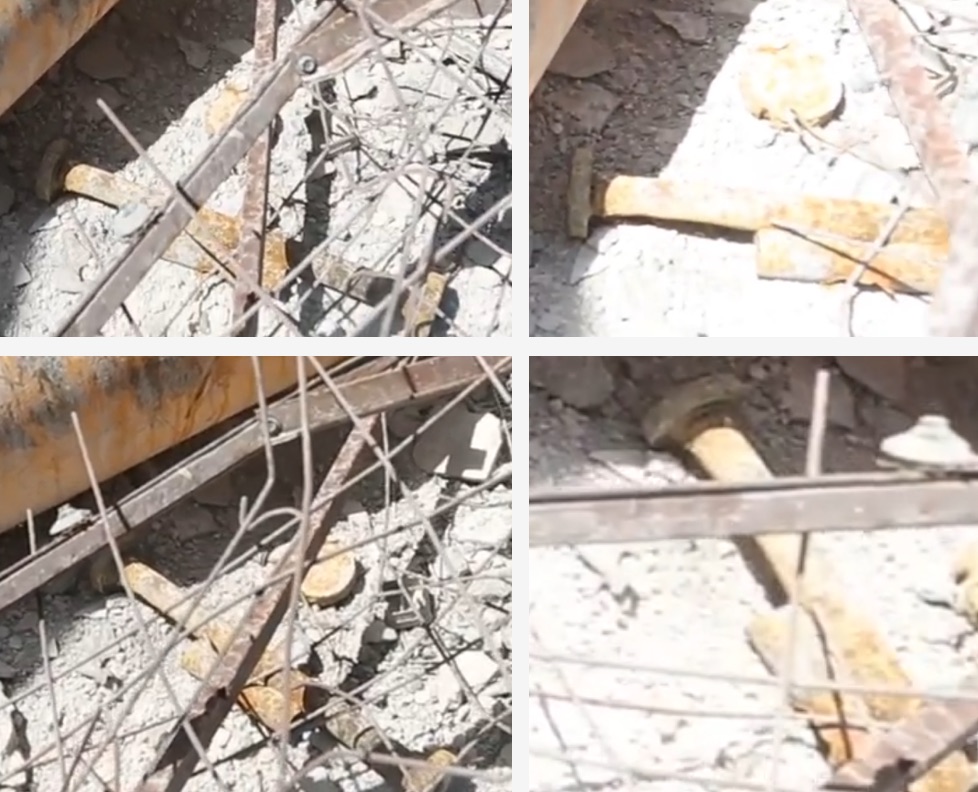
Wheels and axle filmed at the balcony site (source)
Also visible in the debris next to the cylinder is another set of axle and wheels with the same configuration. One of the wheels has detached, and may be the yellow-brown disc visible in the above images:
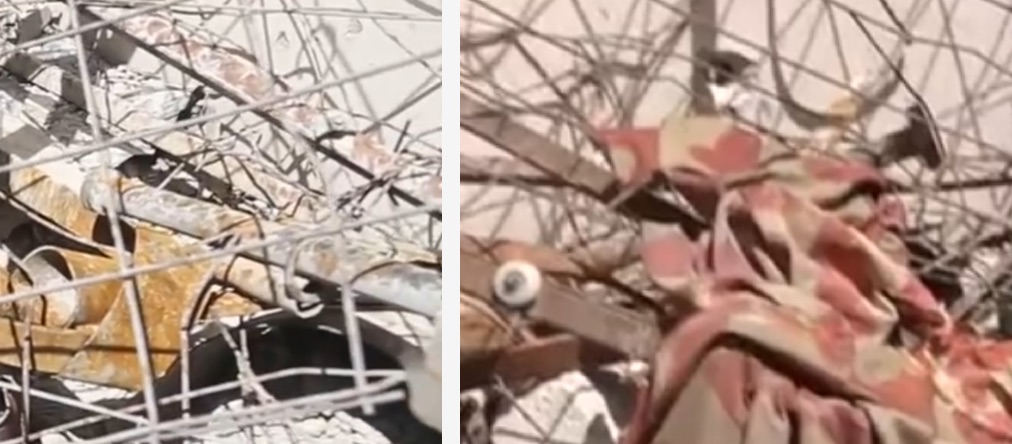
An axle in the debris at the balcony cylinder site (left source, right source)
Also visible in the pile of debris is a similar metal structure of wide metal strips connecting longer, thinner strips, as visible on the bedroom cylinder:
Barely visible in the balcony debris is the same ring, likely a suspension lug used to move the munition, that is visible on the bedroom cylinder:
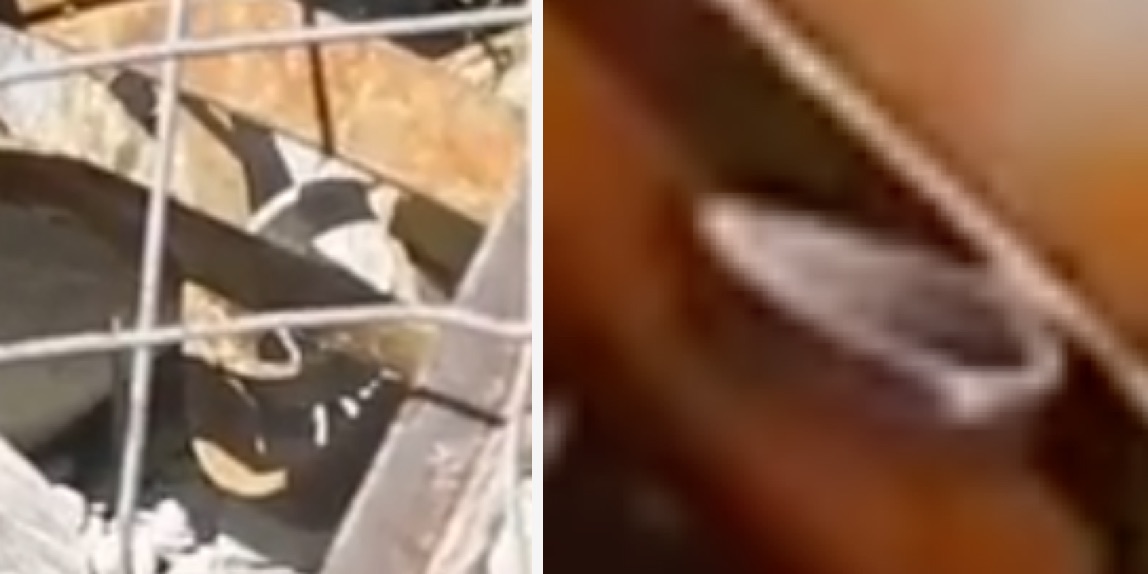
Left, suspension lug from in the balcony debris (source) Right, suspension lug on the bedroom cylinder (source)
Finally, a bolt and possible tail fin is visible in the debris, features also visible on the bedroom cylinder:

Left, bolt in the balcony debris; right, bolt on the bedroom cylinder (source)
Collectively, all these pieces of debris can only mean one thing, that the same outer structure visible on the bedroom cylinder is present at the site of the balcony cylinder, albeit in a heavily damaged condition. It seems highly likely the structure had been attached to the gas cylinder, but at some point had become separated. Without images of the balcony prior to the impact, and without know if any debris was moved, it is impossible to state with certainty how the structure was removed, but the Vesti News footage might offer one clue. The footage shows clear damage to the corner of the building, which may indicate the cylinder hit that corner before finally hitting the balcony floor. It is possible that this impact resulted in the structure becoming detached from the cylinder, but it is not currently possible to establish the exact circumstances through open sources or witness statements:
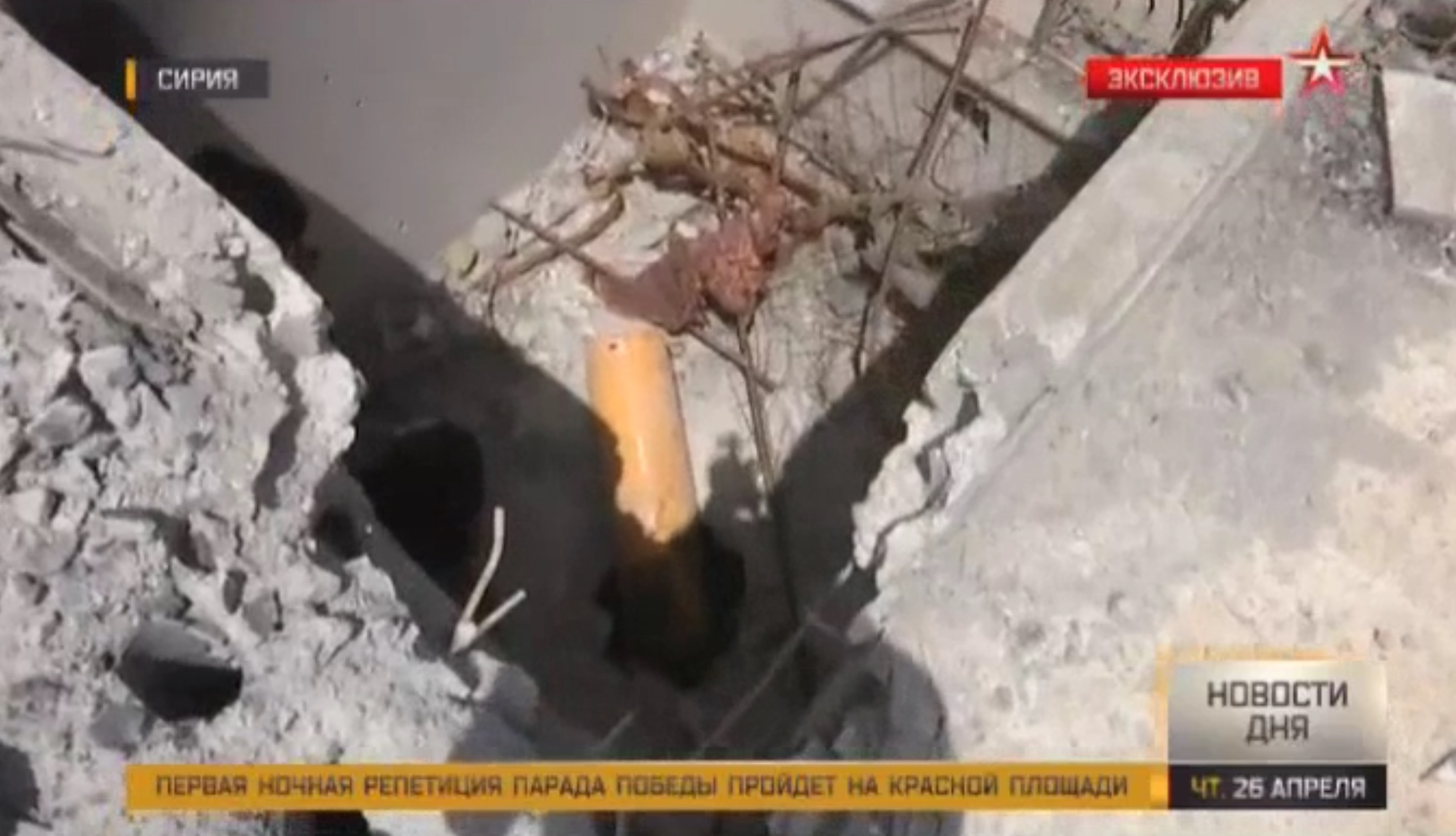
Damage to the building above the balcony cylinder (source)
The significance of the structure linked to the two gas cylinders can be established by examining the history of the use of chlorine gas as a chemical weapon by the Syrian air force. Dozens of aerial chlorine attacks have been reported and investigated since 2014, and there is a clear evolution in the way chlorine has been used. Early examples from Spring 2014 showed a variety of configurations, most based on placing a chlorine cylinder inside a barrel bomb casing, the design of which had become standardised over two years of use. In the below example, a gas cylinder inside a barrel bomb casing from an April 2014 attack in Kafr Zita can be seen:
A later evolution of this design was documented in an OPCW-FFM report examining claims of chemical weapon use in Spring 2015, detailed in JP Zanders’ The Trench:
“The configuration consists of 9 gas cylinders (green) presumably filled with poisonous chemicals. The report suggests that they may have been filled with a chlorine or chloride containing compound. The flasks with potassium permanganate (pink) would then have been used to oxidise the chlorine containing compound, resulting in Cl2. The potassium permanganate may be responsible for the purple–red colour occasionally seen in pictures and video footage of impact sites.”
A diagram of the configuration is shown below:
A year later this design appears to have been abandoned, with multiple instances of chlorine gas cylinders documented in the aftermath of chlorine attacks without the barrel bomb casings previously associated with the attacks. Human Rights Watch documented a number of examples used in the siege of Aleppo in late 2016:
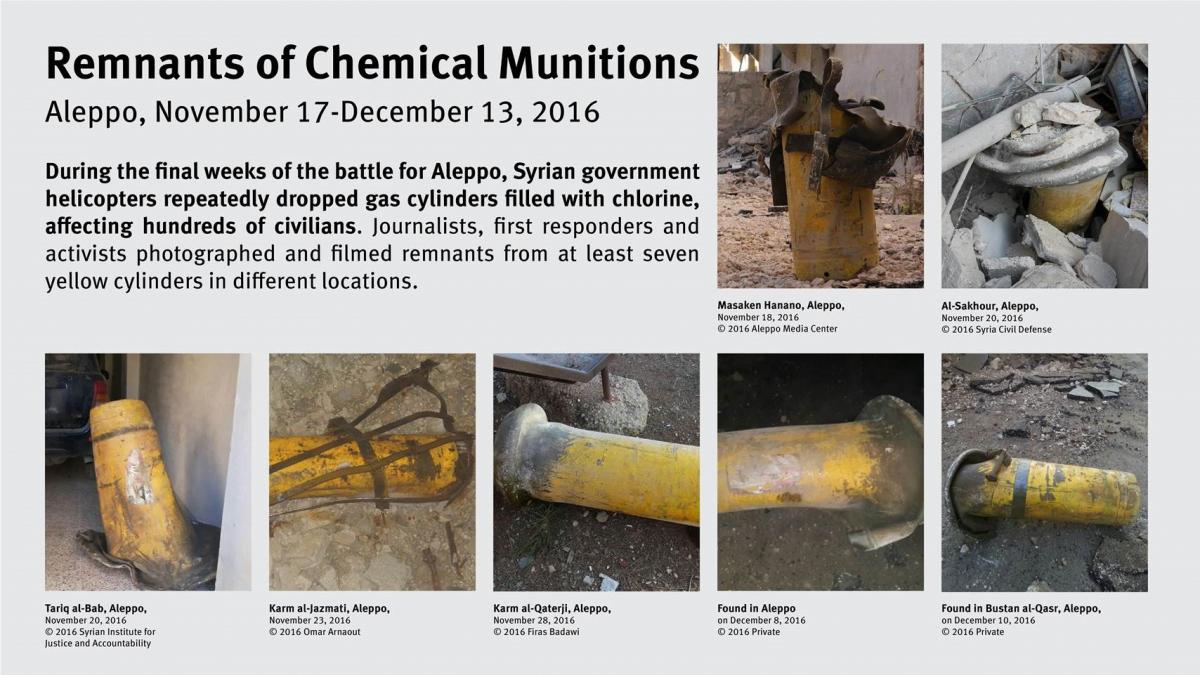
Images of chlorine cylinders used in alleged chlorine attacks in Aleppo (source)
Three of these images are notable in relation to the Douma attack. The Masaken Hanano November 16th 2016 and Karm al-Jazmati November 23rd 2016 attacks both have metal structures visible on the exterior of the cylinders, with the Karm al-Jazmati providing the most complete example:
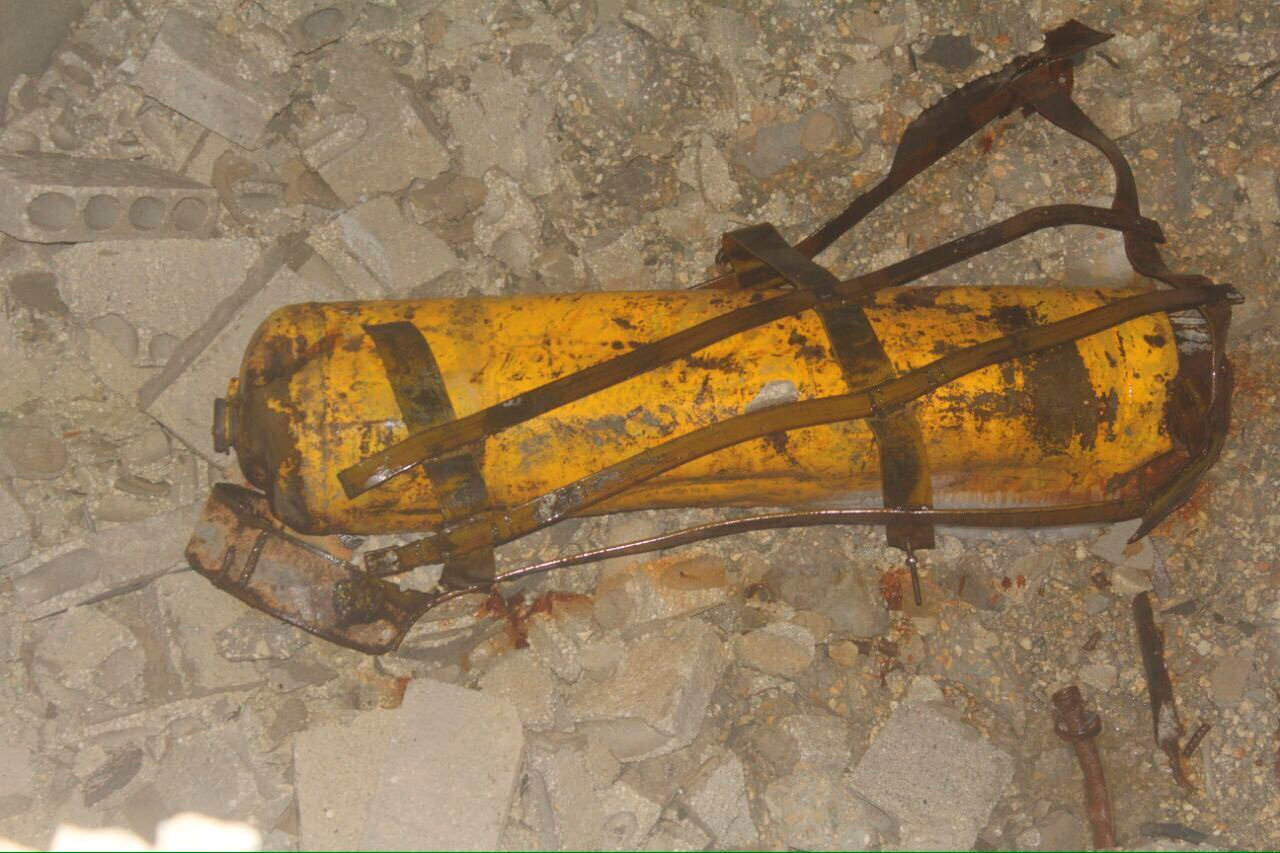
Handout photo provided to Reuters on February 13, 2017, by Human Rights Watch claiming to show remnant of yellow gas cylinder found in Masaken Hanano, Aleppo, Syria after a chlorine attack on November 18, 2016. Courtesy of Human Rights Watch/Handout via REUTERS
The similarities are clearly apparent, metal strips, the bolt on the bottom right hand side, and the remains of what appears to be an axle and wheel on the bottom right of the image. In the Bustan al-Qasr image the remains of what appears to be a similar configuration of axle as visible in the Douma imagery, with a piece of metal tube attached to it, is visible:
Nearly a year later, in August 2017 in Khan al-Assal, Aleppo, the remains of a yellow gas cylinder with near identical modifications to those seen in Douma was documented by the White Helmets:
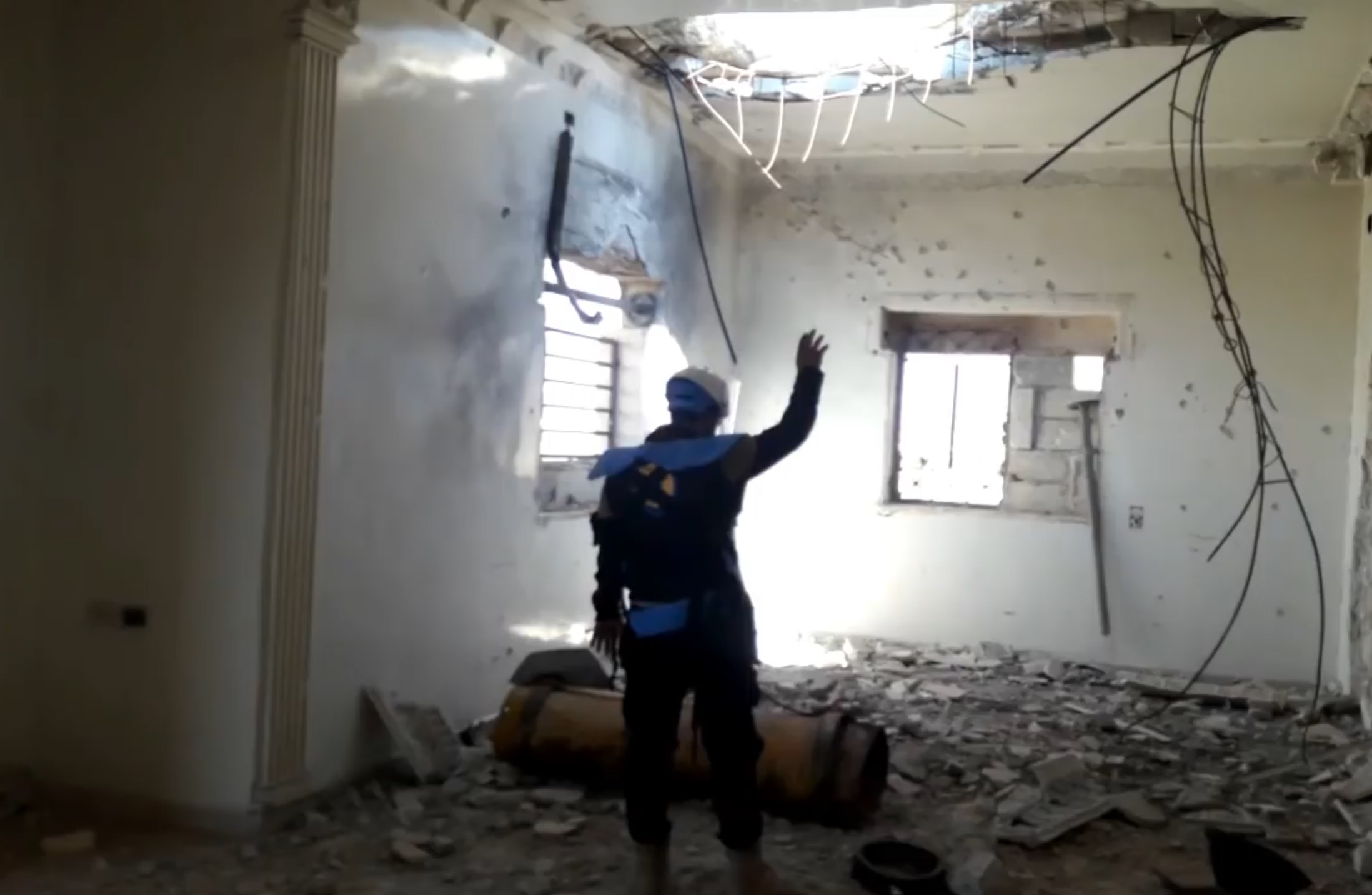
The August 2017 impact site (source)
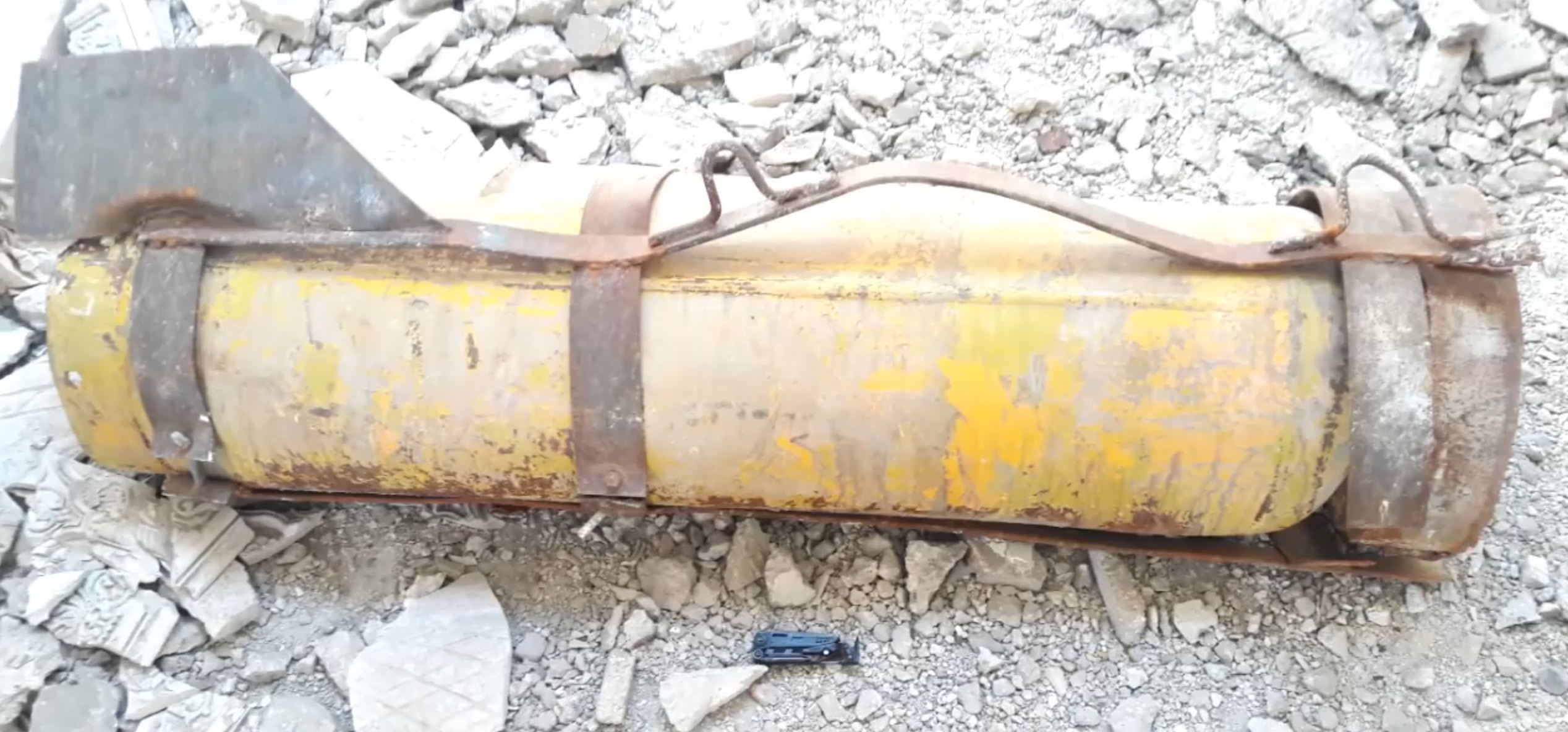
The remains of the munition from the August 2017 attack (source)
It is clear that the remains of the munitions documented after the April 7th 2018 attack in Douma strongly resemble those documented after aerial chlorine attacks since 2016, showing a clear connection between those previous attacks by the Syrian air force, and the Douma chemical attack. While attempts continue to be made to claim the attacks were faked, the clear resemblance to earlier aerial chlorine attacks strongly indicates the Douma attack was another in a long line of chlorine attacks executed by the Syrian air force.
Bellingcat’s research for this publication was supported by PAX for Peace.
